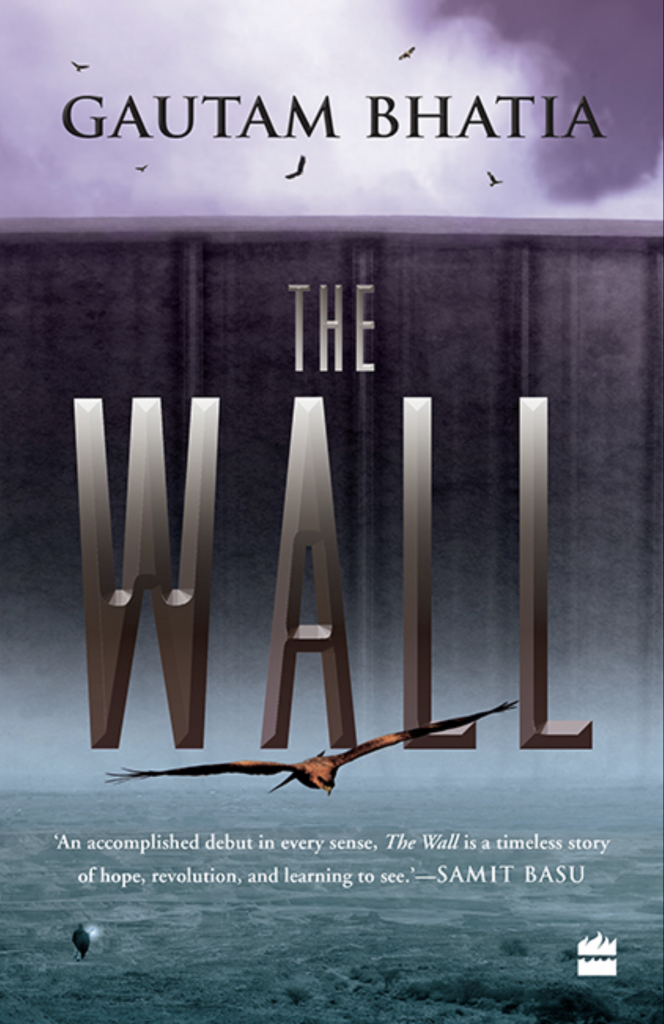
“Hold on to a story long enough,” Anil Menon once wrote in the context of the Indian mythic (and popular) imagination, “and it begins to make a people”. Once reassembled and reshaped into – and as – a systemic, overarching framework, entrenched power structures and dominant institutions strive to maintain their modes and mechanics of existence. Inertia takes hold and the society that coalesces thus aspires to brave the tides of time. It does so through walls – until new stories come along to demolish them.
These walls abound plenty in our lived reality – which is why contemporary fiction constantly endeavours to scale them. The walls in Prayag Akbar’s Leila cleave communities apart; GRR Martin’s A Game of Thrones projects a wall meant to prevent the ultimate other from entering our world; and the walls of James Dashner’s Maze Runner keep the Gladers cocooned inside a WICKED stratagem. However, contrary to its prima facie schematics, Gautam Bhatia’s The Wall (HarperCollins, 2020) isn’t just an analogy. It exists at the liminal spaces where art meets reality, where fiction meets our world, and where individuals are firmly imbricated in the socio-political, historical and economic matrix of their existence. Its characters exist in a matrix of interconnected tissues; community, geography, legality, history, customs, traditions and politics shape individuals and a world caught between reactionary and revolutionary forces, between traditions and disruptions, between the various dimensions of truth, between order and freedom, between peace and liberty, and (perhaps even) between Ambedkar and Marx.
Gautam Bhatia’s engaging debut conjures the city of Sumer, a closed ecosystem that forbids its dwellers from venturing beyond the impenetrable walls that surround it. Divided into two by a river, the city comprises ‘circles’ which manifest an ordered society: the Sumerians live by the dictum (which sometimes is a diktat): a place for everything and everything in its place. Since at a pure, theoretical level, order, social and otherwise, can often become a custom more followed in its breach than observance, the novel recounts a disruption that shakes this Sumerian society. The agents of myth-making find themselves under attack by young, zealous voices: Mithila, Garuda, Dhara, Alvar, et al, ask questions like ‘Who were the Builders?’ or ‘What lies beyond the wall?’
What ensues makes the The Wall a captivating story about a group of students (The Tarafians) who let their curiosity drive them forward. Gripped with existential angst, the Tarafians push their emotional, intellectual, and societal boundaries to re-discover what lies beyond their sphere of existence, imagining the ‘horizon’ that runs into the infinite. The history of all hitherto society becomes the history of finding newer horizons – and this narrative goes beyond the division of labour and the altars of alterity to imagine alternative horizons.
The plot unveils as separation – a rip in the continuum. A sister from her brother; a friend from a group; a fringe from the mainstream; the city of Sumer from the rest of the wall. The pain of this fragmentation provides the critical momentum this narrative needs to snowball and flit across individuals and institutions. It may be read as a story of a promised revolution, or a rebellion that the Builders or the Shoortans failed to quell, but it is, in fact, the story of quenching the thirst for knowledge, realisation, and enlightenment.
A churning tale of self-discovery, masquerading as a socio-political metaphor, The Wall becomes a story where inter-layered narrative arcs – and themes – fuse. The thread of suspense that slithers through it binds the pages in a labyrinth that cajoles the reader to reflect on their identities in the many dimensions of life – in the pages you see our world, not just for what it is but also for what it could, should and must (not) be. From the well-defined map of Sumer to the grotesque blur in the minds of the Tarafians, the monochromatic existence of the city, to the bright swatches of imagination about the world outside the wall, Gautam Bhatia has captured a picture-perfect frame of light and shadow with his words – The Wall will imprint an image of play and adventure of what is means to be human and free in the 21st Century.
Recommended – this isn’t just another brick in the (SpecFic) wall.




